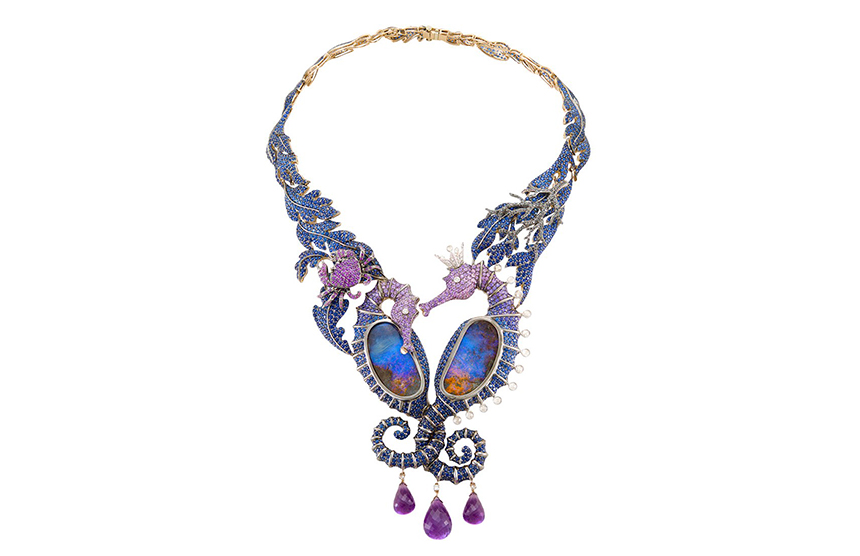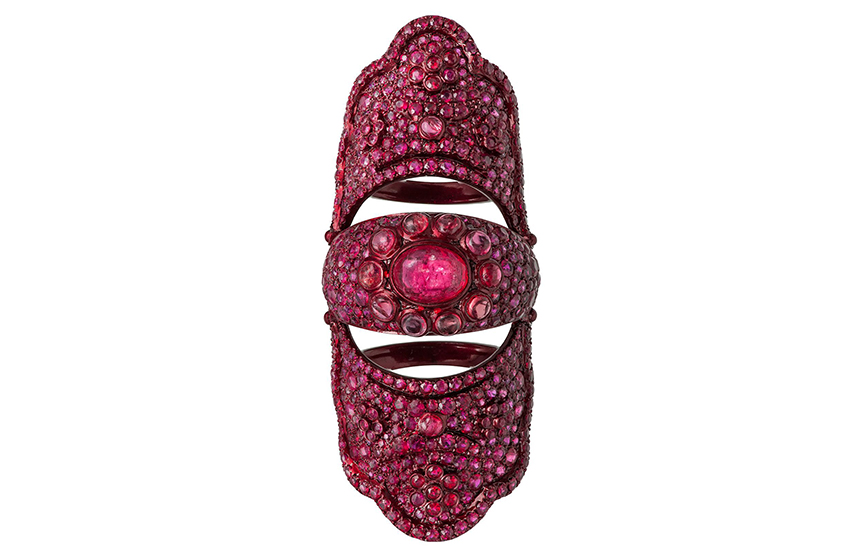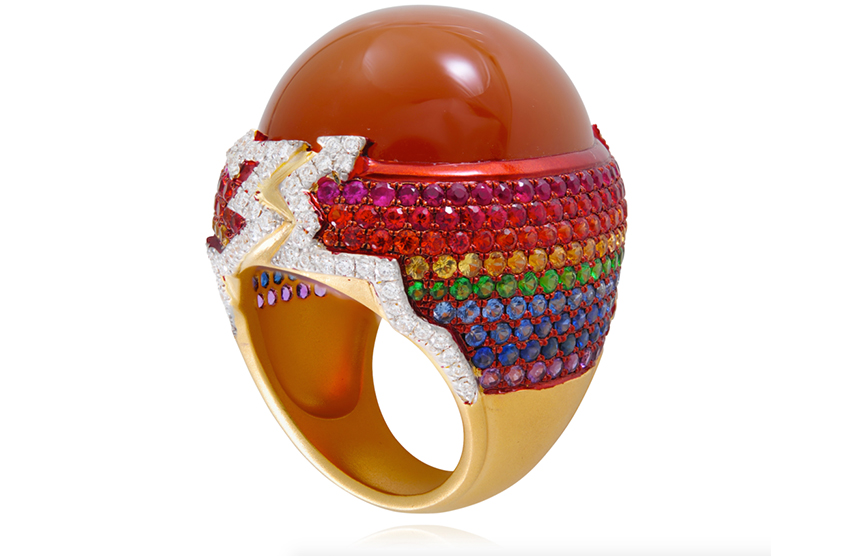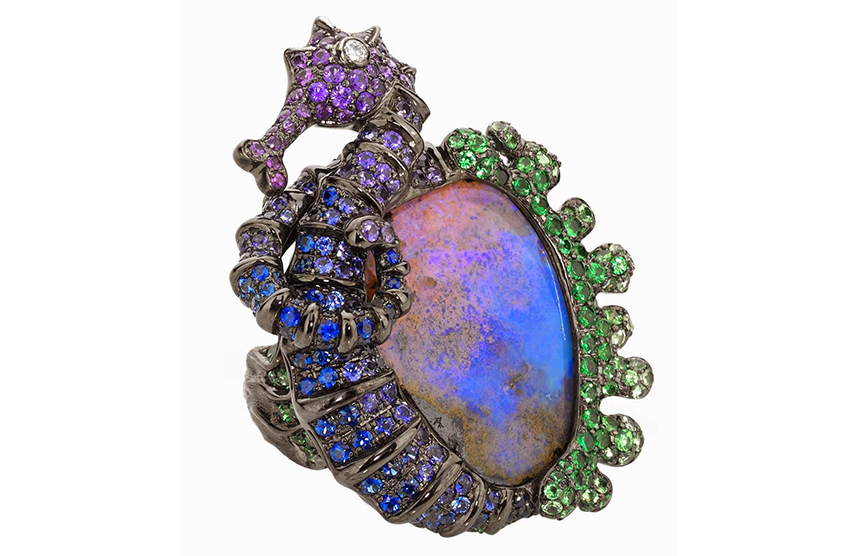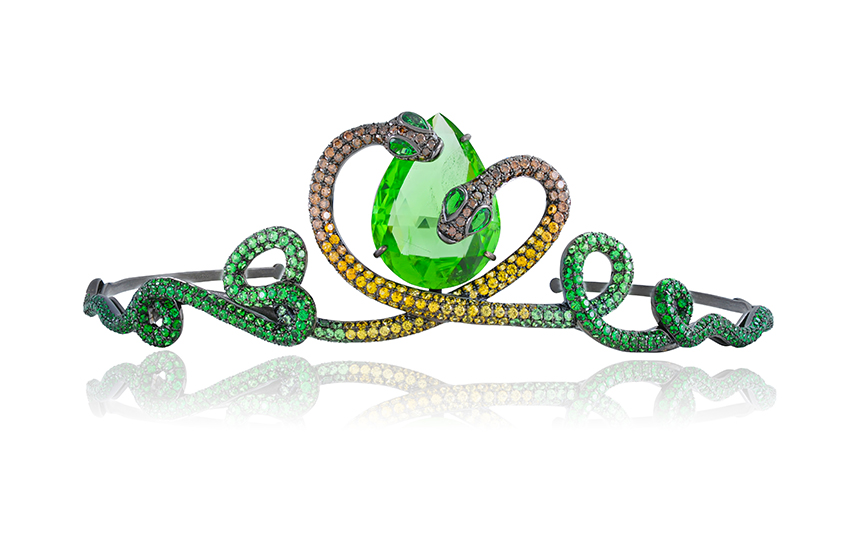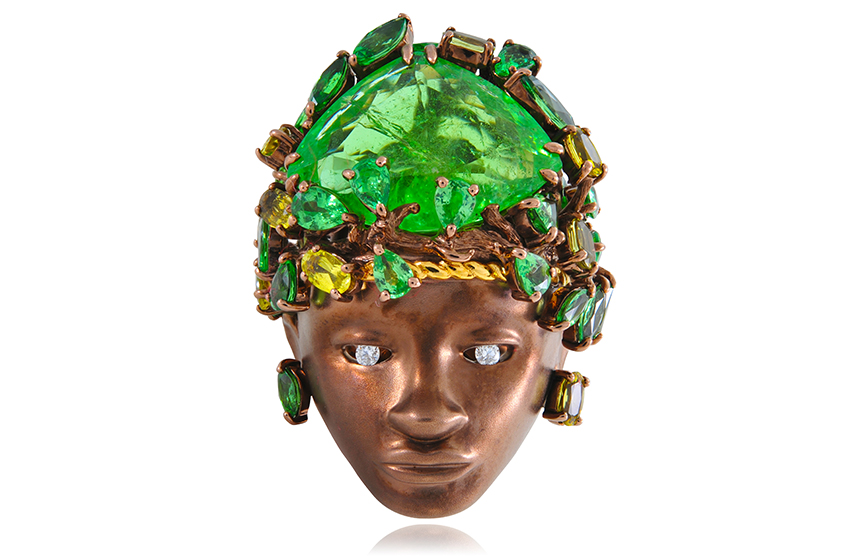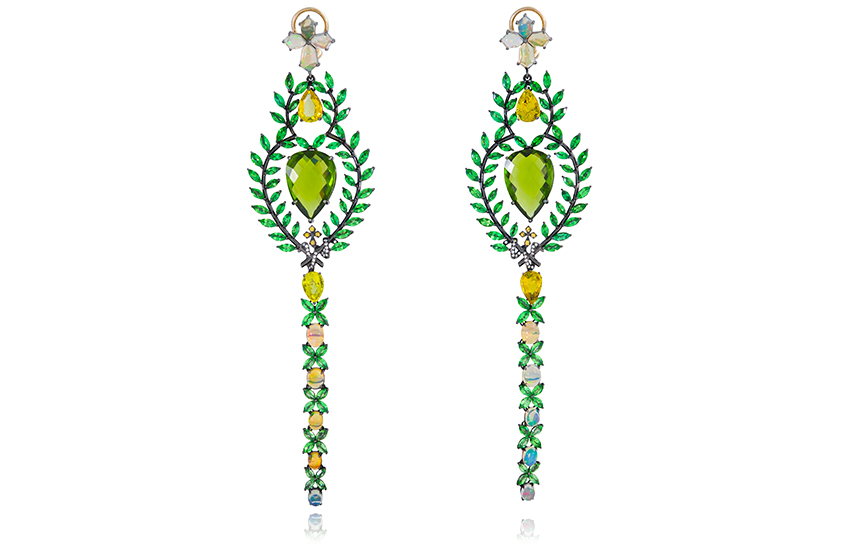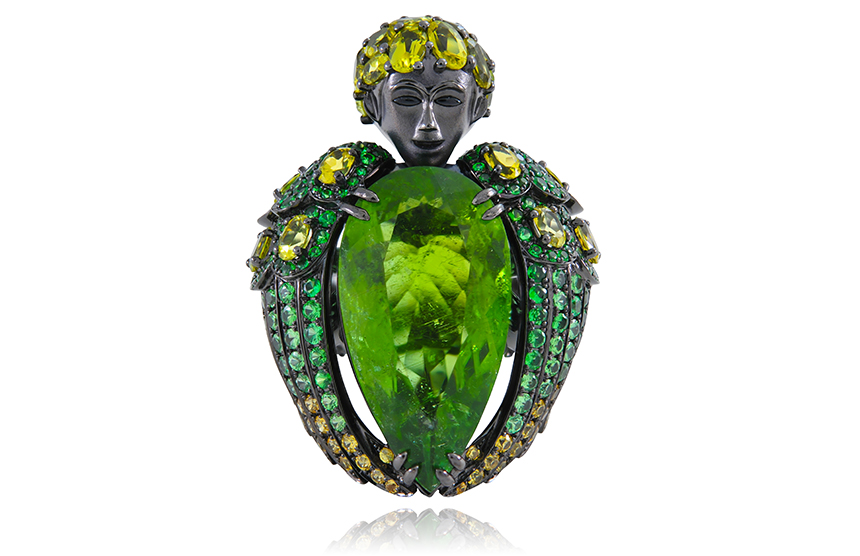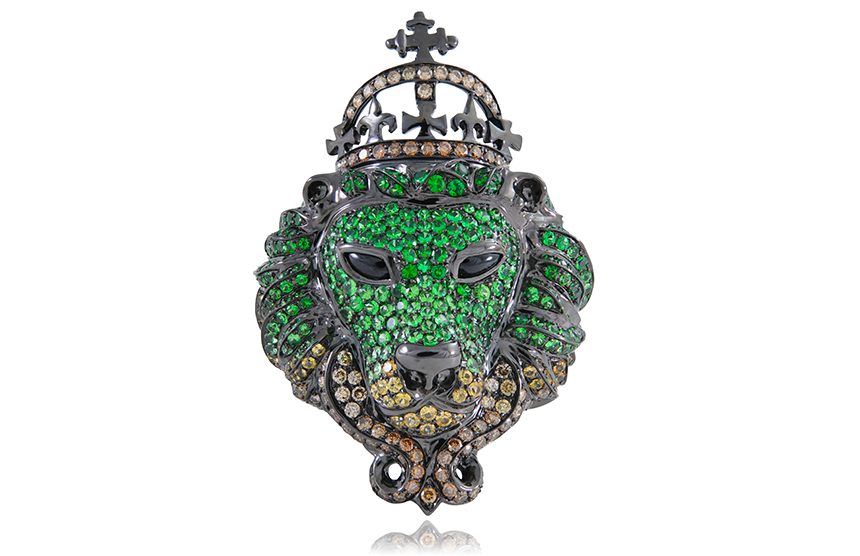“A genius for making jewelry” was how Karl Lagerfeld described Lydia Courteille. The Parisian creative’s one-of-a-kind pieces, which combine a love of history, archaeology, nature and gemology, are a favorite with the international fashion set and discerning high-profile clients alike. Her fantastical creations, or bijoux extraordinaires, are conversation pieces, crafted with vibrant colors and carefully considered gemstones. And while her work often displays surreal detailing and dark humor, it is often imbued with profound spiritual references.
Lydia has had a presence on Paris’s rue Saint Honoré for the past 30 years and upon entering her eponymous boutique, one is literally transported to another world. Referred to as “a cabinet of curiosities” by the designer herself, the plush, darkly decorated interior, reminiscent of a Parisian boudoir, is a fitting backdrop for the colorful and exotic creations on display, each piece with its own unique story to tell.
Her jewelry was used in the film Midnight in Paris, and has been featured in the campaign for Yves Saint Laurent’s perfume Opium. Her distinctive designs have also appeared on the catwalk, in shows for Carven, Alexis Mabille, Prada and Givenchy by Alexander McQueen.
We met with Lydia to talk about the trip to Ethiopia that inspired the Queen of Sheba collection, her beloved Paris, and the time she sold an engagement ring depicting a snake eating a rat…
Lydia Courteille near her boutique in Paris
AM: You’ve been creating fine jewelry for over 10 years and have created 30 collections. What has changed in the fine jewelry business?
LC: There are more people involved. In the past, the workshop was only doing the work for the people who were designers. Now all around the world, the whole workshop wants to be a designer and the problem is, I cannot work in a workshop where everybody forms a long chain, and it’s a whole team's story - the people don’t understand that. I’m not able to do that. For me it’s always a mistake to try to keep the story of somebody else.
AM: You’ve always been independent that way, keeping your own vision intact.
LC: Yes, and also what’s changed is that other designers don’t respect intellectual property anymore.
AM: Do you think e-commerce has changed things?
LC: I think it’s coming, more than before because at least when you take the picture on somebody you can see the volume, but it's not so easy.
AM: Especially as fine jewelry is very much an emotional purchase.
LC: Exactly. And also, we sell a dream. The customers love to come here to be in this ambience and see many different things.
AM: Of course, the visit itself becomes a part of the story. Expanding on the fact that jewelry is an emotional purchase, what are some of the times in their lives that people buy jewelry, besides the obvious occasions?
LC: In my shop, it’s not usually special occasions. Birthdays yes, last week it was for a birthday, but I don’t sell engagement rings or wedding bands.
Lydia's cabinet of curiosities at 231 rue Saint Honoré
"And also, we sell a dream. The customers love to come here to be in this ambience and see many different things."
AM: Do some use your pieces as engagement rings?
LC: Sometimes, yes. The most unusual ring I sold for an engagement was of a snake eating a rat!
AM: That’s a couple with a sense of humor.
LC: That was so fun. And they came together, a man and a woman, and they bought a big snake eating a rat.
AM: Do you have more people buying for others or people buying for themselves?
LC: Most of the time the woman comes first and then tries to bring the man. And most of the time the man doesn’t understand. "Are you sure? Are you sure you want this?" "Yes! Yes! Yes!" And sometimes we have the man coming with the woman, their wife, and they say "so, I want to offer you this" and they say, "no, no I don’t want, I don’t like jewelry".
AM: Do you think there is a relationship between fashion and fine jewelry - particularly here in Paris?
LC: For me it’s very close, very close. There is a lot of connection between both of them.
AM: Who are some of your favorite fashion designers?
LC: I love Alaïa.
AM: And do you have any favorite artists?
LC: Not really, but of course when in the museums I’m crazy for Van Gogh, and surrealists. A lot of surrealist painters I love.
AM: Tell me about your most recently launched collection, The Queen of Sheba.
LC: I did a trip to Ethiopia a few years ago and at the same time I collected the stones, the green stones, and after two years I decided to do a story relating to Ethiopian spirit. Queen of Sheba is a woman with an old story related to the King Solomon of Ethiopia, a mighty person, so it’s why we did this. We created this collection weaving in different stories from Ethiopia, which has a few different religions. We have the very old religion of Catholicism, Judaism, and in the south of Ethiopia you have a lot of tribes. So some of the pieces are inspired by the people from the Omo Valley, in Ethiopia.
Tribes from the Omo Valley, Ethiopia, and pieces from The Queen of Sheba
AM: What stones are featured?
LC: They are tourmaline, green garnet, and also yellow tourmaline. For green you have tourmaline or peridot. Peridot is less expensive and also not so hard as tourmaline. In the north of Ethiopia you have a big desert with a sulphur lake and a volcano called Dallol, bright green pools form on the top and I was inspired by this. I also put some religious symbols [in the collection] because religion, Catholic religion, is really present in Ethiopia.
AM: There are some very strong links between what you saw and what is depicted in the collection. How much time did you spend in Ethiopia?
LC: Three weeks.
The Dallol volcanic crater in Ethiopia
AM: Was the trip specifically to gain inspiration or did it happen organically?
LC: No. I never do. I love to travel to discover archeology. I’m very interested in history and archaeology so at first I don’t do a thing on purpose, but I later realize that it’s a source of inspiration. But at the beginning I never plan it.
AM: Is there anywhere in Paris that still inspires you?
LC: I love the Louvre and the Pyramids, and I love to walk around in the Tuileries Gardens and also on the Ile St Louis. I love this place. It’s beautiful. You know what, I love to go on the Seine, take a boat like the tourists - the Bateaux Mouche. I love Bateaux Mouche. You can see all of Paris. It’s really nice. You can see Notre Dame, everything, but the weather has to be nice.
Visit the Lydia Courteille shop at 231 rue Saint Honoré, 75001 Paris or shop her collection on Net-a-Porter.




